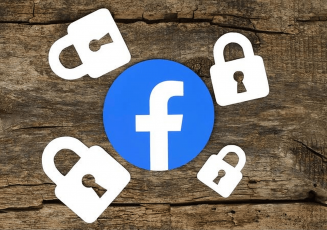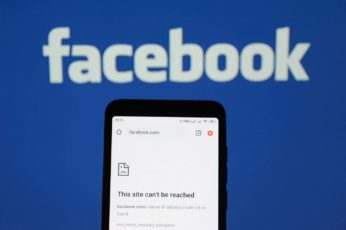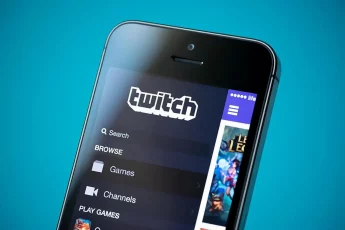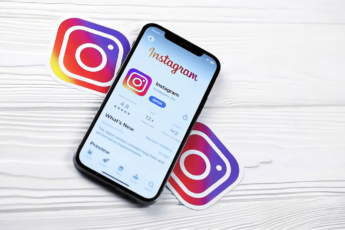YouTube includes plenty of channels aimed at the world’s younger audiences. They are among the world’s largest communication channels regarding subscribers and number of views. Did you know that?
Well, YouTube does know. There is a lot of business potential catering to the internet’s kids. That’s why the video streaming giant launched YouTube Kids in 2015.
There is no doubt that children love to watch videos on YouTube, more so on YouTube Kids, where videos are interesting, high quality, and kid-friendly. YouTube Kids, however, has been criticized for its overly branded content, advertising, and inappropriate clips like pornographic and violent footage.
So the fact that YouTube Kids is online raises the inevitable question: is it safe for children? What risks does it pose to kids? Does it have any parental controls? What are they? This article will answer those questions and many others pertaining to this video platform.
YouTube Kids: What is it? How does it differ from regular YouTube?
YouTube Kids is a version of YouTube aimed at reaching internet users younger than 13 years old. You can use it as a website or as a free app. The typical content on the platform includes TV shows, music, educational resources, and user-generated videos explicitly done for children.
The platform is colorful and features whimsical sound effects. The navigation is picture-based. So it’s all done with kids in mind, and it’s indeed friendly and fun for the youngest. In February 2021, this website boasted 35 million weekly viewers from more than 80 countries.
But we have good news for parents: children can’t become YouTube Kids viewers just like that. First, a parent must perform the initial setup and decide on parental control customization. Then, you can come up with as many as eight user profiles. Each will have an age range so that it can only view the content suited for said range. There are three groups:
- Preschool (4 and younger).
- Older (9 to 12).
- Younger (5 to 8).
There is an algorithm in charge of video curation according to age group. But it’s far from perfect, so there have been many examples of videos deemed inappropriate for its age group, and ads have found their way into the kids. So how safe is YouTube Kids for children when we consider all factors? Keep reading.
How safe is YouTube Kids?

The videos in YouTube Kids come from your regular YouTube platform. An algorithm chooses them as appropriate for children so they can also be shown on the YT Kids website. It goes without saying that algorithms are never perfect for this kind of task. Nuances are beyond a computer’s ability.
That being said, YouTube’s algorithm for selecting children-friendly videos is not bad at all, and the website is safe for the most part. However, a small probability will always remain that something will slip through the selection process that could be disturbing for kids.
Take Squid Game, the Netflix show that became viral recently, thus sparking the appearance of video content. Unfortunately, some of it has been targeting children. Perhaps, this is one of the reasons why YouTube is blocked in some countries.
How is that possible when this show is exceedingly violent and obviously meant for adults only? Well, the thing about a TV show that becomes as successful as Squid Game is that it quickly becomes incorporated into pop culture, even if not for long. And children are avid consumers of pop culture. Often, they are experts at it, easily outdoing their parents. However, Squid Game remains a potential danger to a young child’s mind.
Adult content has been tweaked for younger audiences before. For example, in 2017, the New York Times published an article showing how a series of videos included some beloved cartoon characters doing and saying things that were lewd, violent, or disturbing in some other way. This happens because the algorithm sees the characters in question and automatically considers them suitable for a younger audience without considering what they are doing or saying.
Google noticed the fiasco (Google owns YouTube), so it decided to have more human beings involved in the selection process. The human monitors see the videos personally to ensure they are okay for kids.
And a worried parent can report or block a video if it’s not suitable for the youngsters. The problem with this solution is that it tends to happen only after the parent’s kid has already seen it.
Read also: Is TikTok safe for Kids?
Videos on the platform
YouTube Kids includes four categories.
- Music features children’s songs and classics of the genre.
- Shows include clips or full episodes from famous children’s TV shows. For example, Pepa Pig, Winnie the Pooh, or Thomas and Friends.
- Explore. This is where user-created content is. Clips of toy unboxings, for example, but all other types of kid-friendly content are also in the mix.
- Learning. This category is all about educational content from places like TED-Ed, Khan Academy, or PBS Kids.
An extra section for the “Older” users is “Gaming,” which has videos regarding popular children’s video games.
YouTube Kids and publicity
YouTube Kids makes money from advertising, just like regular YouTube. However, the company says that the ads are carefully chosen to ensure their family-friendliness. They are shown to each user depending on the type of videos they watch regularly and don’t have any click-throughs.
However, in our day and age, marketing is all-encompassing and subtle. Therefore some brands and young “influencers” have YouTube Kids channels that feature publicity disguised as entertainment.
The “unboxing video” is a popular trend within the website, and it’s meant to make children wish they could also unbox a given product, as the kids in the videos do. The problem with this kind of publicity is that you can’t get rid of it by going Premium. Moreover, since the people unboxing their merchandise are already respected by the users, that clouds their judgment even more, so they can’t realize that they’re watching publicity.
Making YouTube Kids safer: How to Keep Kids Safe on YouTube
It’s important to understand how big YouTube is before you can understand why it’s so hard to keep kids safe on it. As per the ongoing research estimates, each month, YouTube has over 240 million users in US alone. That means, the platform estimately has over 2 billion viewers worldwide, and over 30,000 hours of video get uploaded every hour.
The scale of this phenomenon is almost impossible to comprehend, but one thing is certain – YouTube has videos of every type, with content producers desperate to earn enough views to start generating ad revenue.
Unfortunately, the automated filters on YouTube cannot block all unsafe content any more than a single net can catch all the fish in the world’s oceans. YouTube can still be a safe place for your children in 2022 if you know the ways to make sure they are protected.
So, YouTube Kids has its pros, even if they come with some slight risks. The content can be funny enough and even educational, so it can benefit young viewers. They can learn new things, work on creative projects, and see the world from a broader perspective. In the general panorama, allowing children to use YouTube Kids is worth it.
And there is some good news as well. First, you can keep a close eye on your kid’s use of YouTube Kids very easily, as the platform facilitates it. Then, you need to to take care of some essential security steps to enhance kids security online and do some adjustments in settings. In the following sections, we’ll cover what you can do on YT Kids specifically to make it safer for children.
Setting up a secure account on YouTube Kids
As we mentioned earlier, a parent must set up the YouTube Kids app before the child can start watching it. There are two options on the homepage “I’m a kid” and “I’m a parent.” If you click on the first, it will ask you to get a parent to do the setup. So this is what comes next:
- Click “I’m a parent” and follow “Next.”
- Verify your age by entering your birth year and then “Submit” it.
- The intro video will show up. Enjoy it, then go to the “Next” step.
- Use your Google account to sign in. Then the privacy policy shows up, and you need to accept it. If you skip the sign-in process, your ability to use the parental controls will be limited.
- Next, you have to provide your kid’s name, age, and month of birth.
- Pick a profile that matches your child’s age.
- Now you have to choose if you want your child to have the ability to do searches by themselves.
- You will see a quick tour of the website. Enjoy it, and move forward.
- You’re done. Your child can take over now.
Setting up the content filters
You can pick the specific collections, channels, or videos your kid can watch. You do this by setting up the app’s content filters. We show you the procedure to do this in the Android app, but it’s not so different in iOS.
- Open the app and tap the lower right corner (lock).
- Do the math, literally. Answer the math question or provide your passcode.
- Click on “Settings.”
- To change your kid’s profile, select it and type your password.
- Find “Content setings,” and tap on “Edit settings.”
- Click “Approve Content Yourself.”
- Follow the instructions to select the videos you want.
- Click on “Done.”
The parental controls
The ability to create an age-appropriate profile for a young user is only the starting point. There are several other control options available for parents. You can find them in the “Settings” menu, which you must unlock by providing a passcode or solving a math puzzle. Once you’re there, you’ll have these options:
- Block and report. You can report or block any individual video using the three dots icon and selecting either option.
- Disable search. You can remove your kid’s ability to search content within the platform.
- Set a timer. You can decide how much your child can spend using the app. This option is available only in mobile apps, not on the website.
- History. You can view and search the profile’s usage history to keep up with your kid’s activity.
- Handpicking. You can choose what is allowed for your children to watch by hand.
Read also: Can VPNs negate parental controls?
Going Premium to avoid publicity
Everything you’ve done so far is good to keep your children isolated from inappropriate content, except for ads. Unfortunately, parental controls won’t filter ads that your kid shouldn’t see. The only way to solve this problem is to get a Premium subscription so that all the ads go away. The subscription is 11.99 USD monthly for US-based users, and the cost differ from region to region. Please note your YouTube TV membership does not include YouTube Premium.
Speak to your children
No amount of advanced technology can substitute for actual parental care in real life. Help your kids to understand the risks they face as younger YouTube users. Talk to them openly and honestly. You want them to trust you entirely so that if any problem arises, they will come to you first.
Please spend some time with them. Watch YouTube Kids together with them, so you know what they like. Then, create a rule-setting process that involves them so they feel included, thus gaining increased respect for it.
Your most important goal is to ensure that they know that whenever they find a problem or something that makes them feel awkward, they will know it’s safe to come to you. If there is a problem, the sooner you learn about it, the better, and you’ll need your kid to tell you about it.
Conclusion
It’s difficult for children to find their way around the world, whether virtual or actual. That’s why they need parental guidance. And that guidance can make their experience more rewarding, instructive, and joyful.
There’s plenty of good stuff to enjoy for children in YouTube Kids: inspiration, education, and just plain fun. But, of course, you should take advantage of parental controls to ensure that all that comes in the safest possible way is possible.
Of course, there are advocates to ensure kids don’t get online. But unfortunately, this is a trivial solution. It’s both myopic and impossible because the internet is there, and your children will find a way to use it, even if it has to be behind your back — and if that’s what happens, they will not come to you for help when needed. Also, there’s plenty of good material on the internet that can help a kid’s healthy development, and tech literacy is already an essential skill for the members of the next generation.
So the writing is on the wall: if you can’t beat them, join them. And YouTube Kids gives you enough tools to join them as you also take care of their safety.
FAQs
Yes, it’s free of charge. The site runs on ads and subscriptions, like regular YouTube. However, as another security measure, you may want to ensure that your children stay away from the platform’s ads. You can do that by upgrading to a Premium subscription.
Yes, it’s a relatively safe app whose content is picked for younger audiences. And you can improve its safety with the available parent controls.
The platform is designed for kids between 2 and 12 years of age, but there is no limit. Anybody can use YouTube Kids regardless of age.
The platform is relatively safe for kids as it is. But you can add extra layers of security by learning how to use the parent controls and by upgrading your kid’s account to a Premium one so that no inappropriate ads can reach them.






